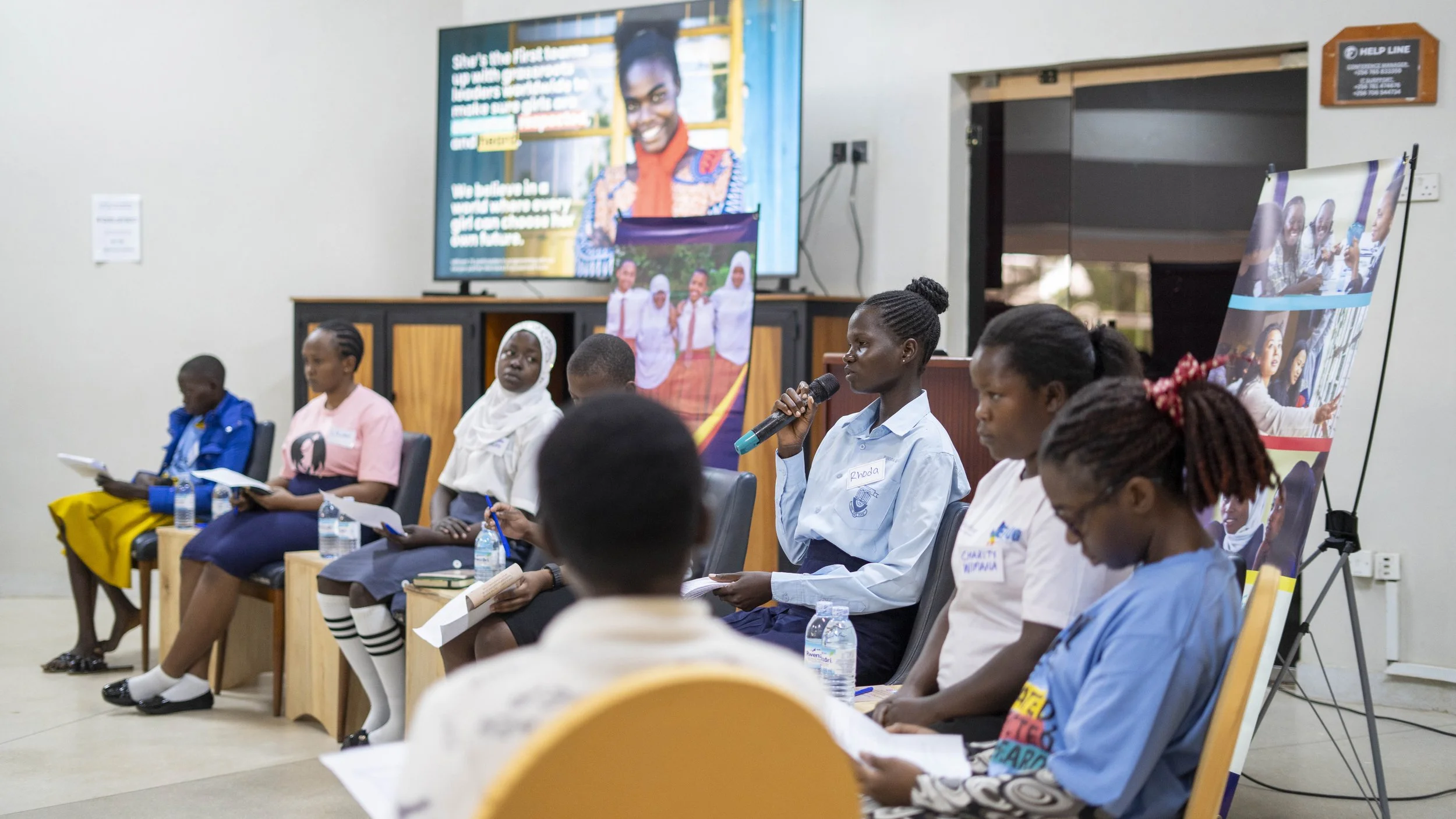By Emma Mogaka, Training Manager
The author, Training Manager Emma Mogaka, assists community leaders during a girl-centered design training at the Girls First Summit in Kampala. (Photo by Zahara Abdul/Candid Local)
Each July, She’s the First hosts one of our most exhilarating in-person events: the Girls First Summit. This year, organizing and facilitating the summits in Nairobi and Kampala was more than just a professional milestone—it was a personal reawakening to why girl-centered programming is not just important but essential.
Surrounded by passionate practitioners from Kenya, Uganda, Tanzania, Sierra Leone, South Sudan, India, and Nepal, the need for centering girls in our programs was very evident. I was reminded that when girls lead, communities thrive.
The Girls First Summit (GFS), a one-day annual professional training for She’s the First partners and grassroots leaders, has grown since its inaugural gathering in Nairobi in 2017. In 2025, we proudly hosted more than 180 practitioners between the 9th edition in Kenya and the 2nd in Uganda. What makes GFS special is how deeply rooted it is in listening to girls.
Every session, every conversation, was shaped by feedback from the very people we serve. This intentionality ensures that we equip practitioners with relevant tools and resources to design and evaluate programs grounded in girl-centered principles—especially in key areas like mental health, SRHR, and safeguarding. We also focused on building safe spaces where girls can explore their options, exercise their agency, and speak for themselves.
“When we create with girls and give them opportunities to lead, we ensure they remain the “why” behind what we do.”
A girl expresses her opinion during the Girl Hour panel at the Girls First Summit in Kampala. (Photo by Zahara Abdul/Candid Local)
Girl Hour remains a critical component of the summit, where girls—who are experts in their lives—tell us what they need. This quote from one of the girls captures it all: “Girls are important in the world, and they should be given a chance to speak out or express what they feel”.
In moments like these, we are challenged to confront our assumptions and biases, to pause and ask: Are we actively listening? Are we co-creating with girls, or simply designing for them?
When girls tell us that they need, for example, to be included in programming, spaces to exercise their agency, more support for their emotional wellbeing, or access to non-judgmental SRHR information, we owe it to them to act.
“In moments like these, we are challenged to confront our assumptions and biases, to pause and ask: “Are we actively listening? Are we co-creating with girls, or simply designing for them?””
The summit reminded me that girl-centered programming is a commitment. It’s a continuous, intentional practice that transforms not just programs but people as well.
As we pause to reflect on the summit’s impact and share lessons within our organizations, I carry with me renewed purpose: to support practitioners in creating with girls, not for them. To sustain momentum. To nurture resilience. When we create with girls and give them opportunities to lead, we ensure they remain the “why” behind what we do.










